
This year’s MLK Tribute performance celebrates the diversity of voices. The Sinfonietta will present voices of inspiration, voices from our past and voices from our present, voices of anger and voices demanding change, all propelled by the transformative voice of music.
More than any other time, this MLK Tribute performance will challenge its audience to listen to its own voice, while making room for the voices of others. We must see clearly where we are today to know where we want to be tomorrow. It is in this understanding that together we shall overcome.
Please join us on this thoughtful journey.
ARTISTS
- Mei-Ann Chen
- Jherrard Marseille Hardeman
- Sujari Britt
- Young Chicago Authors
- Wayne K. Woods
- Waubonsie Valley High School Mosaic Choir
Mei-Ann Chen, Music Director and conductor
 Maestro Mei-Ann Chen led her first tribute to Dr. King in 2012, and the Chicago Sun-Times said of it in a review headlined Chicago Sinfonietta raises the bar on annual King concert tradition, “… she was born to lead this group and these historically conscious concerts… Despite the ravages of the world outside, the hall became a place of real fellowship.”
Maestro Mei-Ann Chen led her first tribute to Dr. King in 2012, and the Chicago Sun-Times said of it in a review headlined Chicago Sinfonietta raises the bar on annual King concert tradition, “… she was born to lead this group and these historically conscious concerts… Despite the ravages of the world outside, the hall became a place of real fellowship.”
In her short time with the Chicago Sinfonietta, she has brought the orchestra to new artistic heights, developing an adventurous approach to repertoire and collaboration while firmly anchoring her ambitious plans in the Sinfonietta’s quarter-century heritage of diversity, inclusion and service to the community. In the process, she has earned two awards from the League of American Orchestra: The Helen M. Thompson Award, given to a music director every two years to recognize their impact and potential for a significant national career, and one for the orchestra, a First Place Award for Adventurous Programming.
Born in Taiwan, Ms. Chen has lived in the United States since 1989. She holds a Doctor of Musical Arts degree in conducting from the University of Michigan, where she was a student of Kenneth Kiesler. Prior to that, she was the first student in New England Conservatory’s history to receive master’s degrees, simultaneously, in both violin and conducting. She is also the Music Director of the Memphis Symphony Orchestra and is in high demand around the globe as a guest conductor.
Mei-Ann Chen’s complete biography can be found here.
Jherrard Marseille Hardeman, guest conductor and composer
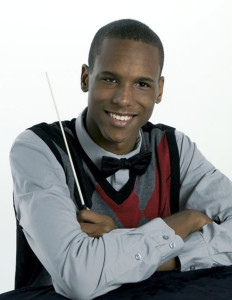 It’s always a risk to throw the word “prodigy” around casually, as it diminishes the meaning of that word. Having said that, the Chicago Sinfonietta has invited not one, but two young musicians deserving of the term to this concert. The first of these is Jherrard Hardeman, a 17 year old conductor, composer, violinist and guitarist from Detroit. The Sinfonietta will not only perform a movement from his Symphony No. 3, but this performance of his work will be led by him as well.
It’s always a risk to throw the word “prodigy” around casually, as it diminishes the meaning of that word. Having said that, the Chicago Sinfonietta has invited not one, but two young musicians deserving of the term to this concert. The first of these is Jherrard Hardeman, a 17 year old conductor, composer, violinist and guitarist from Detroit. The Sinfonietta will not only perform a movement from his Symphony No. 3, but this performance of his work will be led by him as well.
He began his music education on guitar at the age of 7 and began violin studies at 8. His composition and conducting studies began soon afterward, and he attended both Interlochen and Blue Lake Fine Arts camps. He is currently concertmaster of both the Dearborn Youth Symphony Orchestra and the Groves High School Symphony Orchestra.
Hardeman maintains a website that covers both his work as a composer and performer, but also a chamber group he founded that plays much of his music, Integrated Strings Perfection (ISP).
The video is ISP’s performance of the first movement of a chamber work written by Hardeman, “Nothin’ but Drama." Hardeman is on the far left playing violin.
Sujari Britt, cello
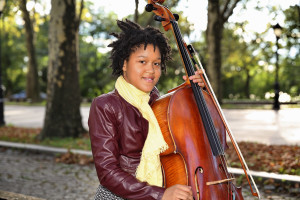 The Chicago Sinfonietta has a long tradition of showcasing the talents of youngsters of diverse backgrounds. Melissa White, who is now a member of the globe-hopping and very hip Harlem Quartet, first appeared with the Sinfonietta at the age of 12. Pianist Jeremy Jordan, who recently earned a Masters degree from Julliard, was 13. Violinist Ade Williams was 15 when she was the Sinfonietta’s guest last season. Astonishingly, though, she was 6 when she made her debut.
The Chicago Sinfonietta has a long tradition of showcasing the talents of youngsters of diverse backgrounds. Melissa White, who is now a member of the globe-hopping and very hip Harlem Quartet, first appeared with the Sinfonietta at the age of 12. Pianist Jeremy Jordan, who recently earned a Masters degree from Julliard, was 13. Violinist Ade Williams was 15 when she was the Sinfonietta’s guest last season. Astonishingly, though, she was 6 when she made her debut.
Into this tradition steps 13 year old cellist Sujari Britt. She showed her prodigious talent and uncanny devotion to and understanding of music from a very early age. She began formal study of the cello at age five, following her study on the violin, and piano. She’s won numerous competitions, including the Grand Prize winner of the New York Concerti Sinfonietta Shining Stars. She’s performed at the White House for President Obama and the First Lady. Heck, she’s even participated in a TED Talk.
The title of this video is “Prodigy Cellist Will Amaze You." Trust us, it will.
The young cellist also has a rather sophisticated and beautiful website.
Young Chicago Authors, spoken word
Music is powerful, no doubt. It has the power to express joy and sadness, agitation and serenity. Music, especially gospel music, was a source of strength and comfort for Dr. King. It was his gift of oratory, though, that stirred a nation to approach greatness at last. Dr. King articulated a world out of balance, a place where justice was often a stranger.
Young Chicago Authors is an arts organization that engages youth in the act of telling their own stories through spoken word, verse and traditional journalism, playwriting, fiction and many other forms. Included under its umbrella is Louder than a Bomb, a poetry festival founded in 2001 to give youth an opportunity to share their honest stories in a new and radically diverse public cultural space. The Sinfonietta has invited four poets to give their contemporary reflections on Dr. King’s legacy: Karlyn Boens, Omari Ferrell, Sajahari Saulter-Villegas and Morian Dowd. They will also share in the narration of Aaron Copland’s Lincoln Portrait.
The Young Chicago Authors website has a wealth of information on the organization’s mission and programs. The video is a trailer for a documentary about Louder than a Bomb.
Wayne K. Woods, spoken word
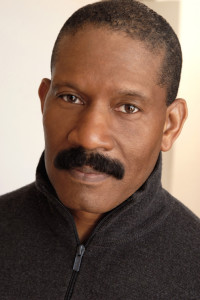 Dr. King was certainly not the only leader for civil rights and justice, but there is little doubt that he was a powerful speaker who could convey the force of his moral authority to believers and skeptics alike. The best known of these speeches is what came to be known as the “I Have a Dream” speech delivered at the Lincoln Memorial in 1963, and it surely ranks among the greatest speeches in history.
Dr. King was certainly not the only leader for civil rights and justice, but there is little doubt that he was a powerful speaker who could convey the force of his moral authority to believers and skeptics alike. The best known of these speeches is what came to be known as the “I Have a Dream” speech delivered at the Lincoln Memorial in 1963, and it surely ranks among the greatest speeches in history.
Wayne K. Woods is an actor whose credits include the stage productions of “Message in the Music” with Della Reese, “Oedipus," “Simpleton of the Unexpected Isles," “Rag Time” and “Narina." It’s worth noting that he is also an ordained Minister of the Gospel, which certainly gives extra heft to his reading of excerpts from Dr. King’s landmark speech at this tribute. This video contains a portion of that performance.
Mark Meyers, Choral Director
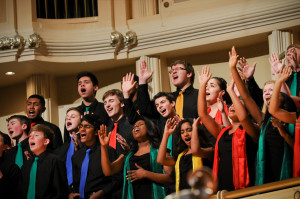 Choir music has long been a part of the Sinfonietta’s tribute concert. Whether it is the classical strains of Beethoven’s Ode to Joy or the gospel sounds of a church choir, the power of the human voice in song lifts every celebration. The Mosaic Choir, as their name implies, draws from a global range of praise music. They have collaborated with the Watoto Children's Choir of Kampala, Uganda; South African singer-songwriter Vusi Mahlasela; jazz artist Kirk Whalum; and Master Drummer and Composer Sowah Mensah from Ghana, West Africa. They also performed for Rajmohan Gandhi (grandson of Mahatma Gandhi) as part of the Naperville Celebration of Peace.
Choir music has long been a part of the Sinfonietta’s tribute concert. Whether it is the classical strains of Beethoven’s Ode to Joy or the gospel sounds of a church choir, the power of the human voice in song lifts every celebration. The Mosaic Choir, as their name implies, draws from a global range of praise music. They have collaborated with the Watoto Children's Choir of Kampala, Uganda; South African singer-songwriter Vusi Mahlasela; jazz artist Kirk Whalum; and Master Drummer and Composer Sowah Mensah from Ghana, West Africa. They also performed for Rajmohan Gandhi (grandson of Mahatma Gandhi) as part of the Naperville Celebration of Peace.
The mission of Mosaic is to represent the rich cultural and ethnic diversity of west suburban Waubonsie Valley through its membership and repertoire. Their young voices are remarkably powerful, and their very existence shows that, even in these grim times, the dream of Dr. King remains alive not only for this country, but around the world.
The repertoire chosen for this concert, arranged for orchestra and choir, will range from the contemporary gospel of Richard Smallwood to the traditional South African song Freedom Is in Your Hand. The video features another South African song, Ntakana.
COMPOSERS
Symphony No. 3 in D Major “Blues” Mvt. III: Rocco
 As noted earlier, Jherrard Hardeman is both the composer and conductor of one of this concert’s showcase performances. The young composer has already amassed a number of compositions, ranging from a saxophone quartet to several chamber works for strings. He has a penchant for giving his compositions enigmatic names like Trail of Ignorance, Nothin’ but Drama, and tonight’s piece, Blues.
As noted earlier, Jherrard Hardeman is both the composer and conductor of one of this concert’s showcase performances. The young composer has already amassed a number of compositions, ranging from a saxophone quartet to several chamber works for strings. He has a penchant for giving his compositions enigmatic names like Trail of Ignorance, Nothin’ but Drama, and tonight’s piece, Blues.
The 3rd movement of Blues starts off in an achingly elegiac mode, bringing to mind Barber’s Adagio, yet underscored with a steady rhythmic pulse. The rhythm slowly drops away, only to return in prominent fashion. About halfway in, the mood lightens as a new, driving rhythmic motif asserts itself. As the movement concludes, the rhythm once again falls away, but the melancholy of the first section has shifted into a more peaceful place, conveying a sense of resolve. All in all, it’s a pretty remarkable six minutes of music.
In the video, Hardeman conducts the piece with a student chamber orchestra at Interlochen Center for the Arts.
Concerto for Violoncello, No.1, op. 33, A Minor
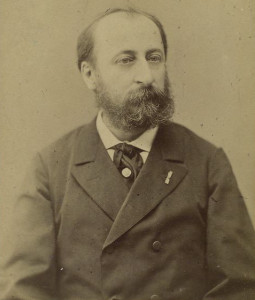 The French composer Camille Saint-Saëns lived a long life, one filled with complications and seeming artistic contradictions. Born in the early 19th century, some of his early works failed to find favor because of their radicalism. Toward the end, he was faulted for his staunch conservatism. In between, though, he managed to compose enough works of great merit to be awarded France’s highest honor, the Grand-Croix de la Légion d'honneur. The first cello concerto, written when he was 37, is among them. Many composers, including Shostakovich and Rachmaninoff, considered it to be the greatest of all cello concertos.
The French composer Camille Saint-Saëns lived a long life, one filled with complications and seeming artistic contradictions. Born in the early 19th century, some of his early works failed to find favor because of their radicalism. Toward the end, he was faulted for his staunch conservatism. In between, though, he managed to compose enough works of great merit to be awarded France’s highest honor, the Grand-Croix de la Légion d'honneur. The first cello concerto, written when he was 37, is among them. Many composers, including Shostakovich and Rachmaninoff, considered it to be the greatest of all cello concertos.
The concerto is unusual in that instead of the conventional three-movement form, he structured the piece in one continuous movement. This single movement, though, contains three distinct sections, keeping the solo instrument in the foreground throughout. The music is tremendously demanding for cellists, making it a favorite of virtuosos.
A solid biography of Saint- Saëns can be found at Classical Net. The video features a portion of Jacqueline Du Pre’s recording with Daniel Barenboim and the Philadelphia Orchestra.
Lincoln Portrait
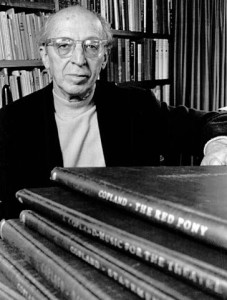 In 1942, shortly after the U.S. entered World War Two, conductor Andre Kostelanetz commissioned Aaron Copland to compose a work to fortify and comfort people during that time of national distress. Lincoln Portrait has since become a bit of a touchstone in times of crisis. Its text quotes liberally from the words of the 16th president, who himself faced the profound national crisis of the Civil War and the injustice of slavery. As we remember and seek to honor Dr. King in this, another time of distress, these words and the stirring Americana-infused music that Copland set them to are once again much needed.
In 1942, shortly after the U.S. entered World War Two, conductor Andre Kostelanetz commissioned Aaron Copland to compose a work to fortify and comfort people during that time of national distress. Lincoln Portrait has since become a bit of a touchstone in times of crisis. Its text quotes liberally from the words of the 16th president, who himself faced the profound national crisis of the Civil War and the injustice of slavery. As we remember and seek to honor Dr. King in this, another time of distress, these words and the stirring Americana-infused music that Copland set them to are once again much needed.
Lincoln Portrait has been narrated by many, from the great James Earl Jones to Henry Fonda to, in 2005, then U.S. Senator Barack Obama with the Chicago Symphony Orchestra in Millennium Park. Now, we can add the voices of our city’s youth to this distinguished list.
An extensive look at Aaron Copland and Lincoln Portrait Can be read at the website of the Harry Ransom Center of the University of Texas. The video features wonderful imagery and the voice of James Earl Jones. The narration begins just after the 7 minute mark.
Research and copywriting by Don Macica.
Don is a marketing consultant to the performing arts community and a contributing writer to several online publications including Chicagomusic.org and Arteyvidachicago.com. When not traveling, he lives a stone's throw from Lake Michigan in Chicago’s Rogers Park neighborhood. He is the author of Border Radio, a blog about music, migration and cultural exchange.
